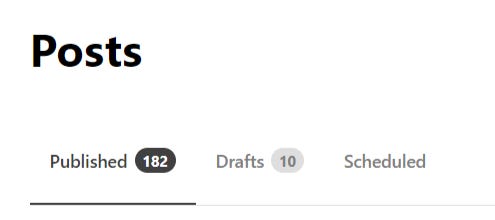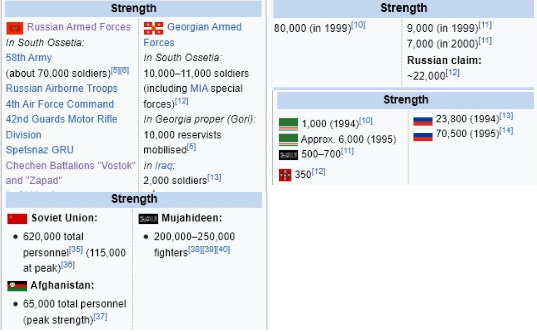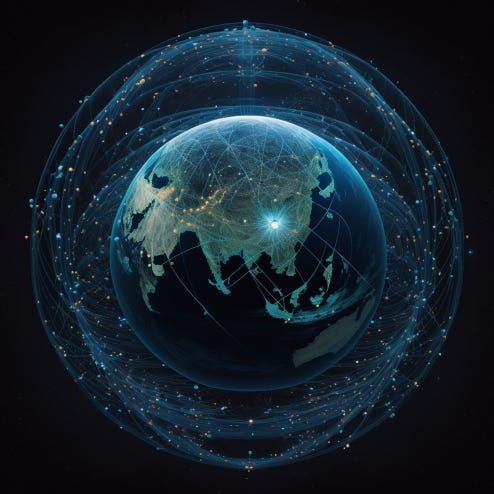(cover art credit: Rybar)
Well folks, a week ago was our official one year anniversary here. My very first article was published on February 1st, 2023. Since then, the dashboard here tells me I’ve done 182 articles, with an additional 34 on my second newsletter.
From memory, the first half year or so of writing I seemed to have been averaging 6-8k words per article, only semi-recently finding ability to tamp down my wild flights to maybe 3-4k per. All things considered, this could put me at somewhere in the 4-6k average range x 182, which would put me at over 900,000 words just from this news letter alone. You can add perhaps another 34 x 3000 = 100,000+ from the second one.
That means in a single year, I’ve outputted potentially over 1 million words here, which is equivalent to more than 10 average-sized novels, which are usually around 90k words. A cursory search tells me Tolstoy’s War and Peace clocks in at 587,287 words, with the Lord of the Rings trilogy tallying ~480,000.
I note this partly because I myself find this an astounding figure, and can hardly imagine where all those words came from—but also because one recent unsubscribed customer complained that they could not justify paying the monthly subscription owing to, what they said, was a low output.
Of course, pure quantity is never praiseworthy in its own right, but in a tongue-in-cheek and jesting spirit, I think it’s evident here that my output is certainly the last thing anyone can fault me for. In fact 182 articles divided by 12 months comes out to 15 per month, which averages to an article every 2 days or so. That doesn’t seem bad at all; and that’s not counting the second publication.
Of course, this is also a subtle sell: for all those interested in becoming paid subscribers, here is quantitative proof you will not be let down, at least when it comes to the regularity of quality, well-researched posts.
And unfortunately you will have to become a paid subscriber to read the rest of this massive report on the state of the war, and the future outlook thereof. It ended up coming in at such a hefty scale that I decided to split it into two parts. The first part here is ~6000 words, and the second—in my opinion more interesting—part is already fully written, but will release in a day or two, so as to give you time to read and digest the first one.
The report mainly breaks down several new prominent thinktank pieces on the rapidly evolving modern battlefield and how it ties into Ukraine’s chances to turn the conflict around, as well as what the US and allies are desperately doing to catch up. Some of the covered topics are: the little-seen extended and more detailed version of General Zaluzhny’s latest CNN thinkpiece, Rob Lee and Michael Kofman’s new War on the Rocks essay, Mick Ryan and Lt. General Clint Hinote’s new policy paper on the future of combat systems, as well as a surprise piece from Russian military thinktank-land, with some eye-opening admissions on Russia’s critical weaknesses exposed by the conflict and what to do about them, some of which will be in Part 2.
If that piques your interest, please subscribe today—you won’t regret it, and will be able to enjoy many subscriber-only premium pieces coming down the pipeline soon. And to all subscribers paid and free, I give a big thank you for joining me on this journey, as your support has definitely made it all worthwhile and continues to put wind in my sails against the rising waves of censorship and other threats that may be brewing on the distant horizon; there will be plenty more rousing content to suit you all.
Now, without further ado, let’s celebrate the one year anniversary by first looking back at how it all started, and where things are headed.
My first article came on February 1, 2023:
It was part one of an ongoing series where I attempted to divine precisely what the future of Russia’s offensive strategy would look like. The first part dealt with establishing a correct historiography of the early part of the SMO, as I felt that the most common misunderstandings of the present SMO developments stemmed from an incorrect set of assumptions—or indoctrinated fallacies—about the actual numbers and motivations involved at the beginning.
The second part is where I began to break down more of how Russia’s Phase 2.0 would look like:
This is now more relevant than ever because, while we were expecting a potential major post-mobilization offensive phase for 2023, what we got instead was the AFU’s own “all in” offensive. Russia’s general staff chose to devote 2023 entirely to active defense in crushing the AFU’s grand summer ‘counter-offensive’ and exhausting their potential. Shoigu has now stated on record multiple times in recent months that this was the main military-objective aim of 2023, as well as building up the Russian Army’s combat potential, arms and industries.
But now that the offensive has come and gone, and Ukraine has exhausted itself, Russia is positioned much closer to the type of offensive Phase 2.0 we expected as the natural evolution of the war. And this is why many of the earlier discussions regarding Russia’s future approach are more relevant now than ever.
At the very end of the Part 2 article above, in the section titled ‘Stealth Offensives and Ghost Brigades’, I explained the strong possibility that Russia’s future offensive would not be the “big arrow” push many expected, but rather a ‘death by a thousand cuts’ which squeezes the AFU from every side with simultaneous pressure. This method would cut down the NATO ISR overmatch by distributing the action over so many ‘hotspots’ as to prevent any centralized easy-to-monitor front. In effect, it puts heavy strain on ISR infrastructure, analysts’ workload, etc., requiring far more satellites to go into many different non-cooperative orbits, stretching lead times longer, and thus diminishing accuracies of OODA loops, etc.
I carried this theme further in the next unofficial part of the series:
In the above article, I predicted specifically this scenario that Russia will utilize to stretch a battered Ukrainian army to its breaking point:
At the time of writing much of the strategic expectations were more intuitive hunch, as drone warfare had not yet escalated to the emergent levels seen today, which only now lend certainty to the conflict’s future development, not to mention all peer-level conflicts from this point forward.
Based on today’s unprecedented small drone saturation, we can say with confidence that large arrow offensives are out, replaced with the atomized, highly dispersed style of combat revolving around small semi-autonomous groupings.
Fascinatingly, some Russian theorists I pointed to previously had long expressly predicted this type of warfare evolution. For instance, take this article:
In the above, American Lt. Colonel Lester Grau comments on Soviet theoretical developments around the time of the Cold War’s final years:
The Soviets see non-linear battle as one in which separate “tactically independent” battalions and regiments/brigades fight meeting battles and secure their flanks by means of obstacles, long-range fires and tempo. . . . Large units, such as divisions and armies, may influence the battle through employment of their reserves and long-range attack systems, but the outcome will be decided by the actions of combined arms battalions and regiments/brigades fighting separately on multiple axes in support of a common plan and objective. . . .
Tactical combat will be even more destructive than in the past and will be characterized by fragmented [ochagovyy] or non-linear combat. The front line will disappear and terms such as “zones of combat” will replace the outdated concepts of FEBA, FLOT and FLET. No safe havens or “deep rear” will exist.
This matches what we’re seeing today.
In the article I went on to quote Russian theorist Major General Vladimir Slipchenko, who emphasizes these points:
Keep reading with a 7-day free trial
Subscribe to Simplicius's Garden of Knowledge to keep reading this post and get 7 days of free access to the full post archives.












